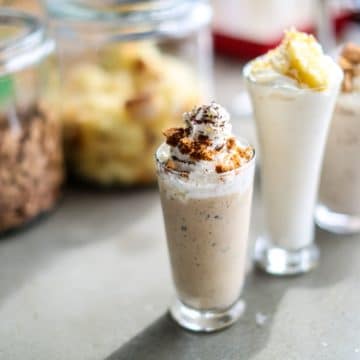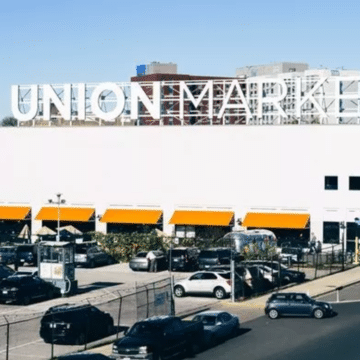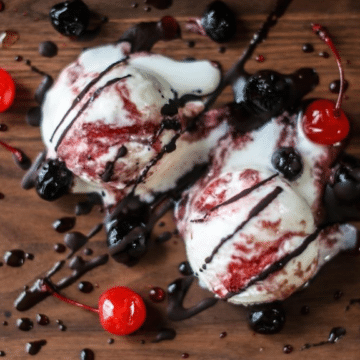WASHINGTON — Robb Duncan compares the taste of gelato that’s scooped fresh from the machine to an unmatched flavor experience.
“You can’t one-up that, you can’t get any better, you can’t trump that,” Duncan says. “It’s the top.”
Duncan would know. As the co-owner of Dolcezza, he’s undoubtedly tasted more gelato in the past 10 years than the biggest of gelato fans. And now, he’s offering this experience to others with Dolcezza’s new 4,000-square-foot gelato factory and coffee lab in Northeast D.C.
Beginning Friday, March 21, the public can belly up to the factory’s 20-seat bar, enjoy a cup of coffee and taste the freshly-spun texture of gelato — in flavors such as Thai Coconut Milk with chocolate chili crumble and Singing Dog Vanilla with rosemary brown sugar walnuts — before it’s tempered and shipped to local stores, restaurants and Dolcezza’s retail locations.
 Dolcezza churns out 300 seasonal flavors each year with 75 percent of its ingredients from local farmers and producers. (Courtesy Joshua Cogan)
Dolcezza churns out 300 seasonal flavors each year with 75 percent of its ingredients from local farmers and producers. (Courtesy Joshua Cogan)
Rewind 10 years ago, and Dolcezza’s space was nothing close to 4,000 square feet with room for a tasting bar and coffee lab. In fact, it was 300 square feet. And Duncan’s experience with gelato wasn’t as advanced as it is today.
He describes his pre-Dolcezza gelato experience as this: His mother-in-law and father-in-law took a one-week gelato-making class in Argentina.
“That was the extent of experience with making gelato when we opened in 2004,” says Duncan, who owns Dolcezza with his wife Violeta Edelman.
“We really felt that we had a good idea, and that there was a need for good, homemade, using fresh ingredients, gelato … because 10 years ago, no one really knew much about gelato.”
The first month they were open, Duncan and Edelman enlisted the help of a man named Gustavo, who came up from Argentina and taught them how to conceptualize flavors in small batches and produce them in larger ones.
“That helped us to get things going — at least with somebody who knew how to make batches of gelato,” Duncan says.
After Gustavo left, Duncan and Edelman learned by doing.
 Coffee is another staple product of Dolcezza — one that Duncan says was initially just happenstance. (Courtesy Joshua Cogan)
Coffee is another staple product of Dolcezza — one that Duncan says was initially just happenstance. (Courtesy Joshua Cogan)
“It was really just jumping in, having a good idea, loving food, loving working with food, making it with our own hands, and we just kind of went on that impulse. It’s worked out,” Duncan says.
Four years after opening the Georgetown location, Dolcezza expanded to Bethesda, then Dupont Circle in 2010, Fairfax in 2012 and now the Northeast factory in 2014.
Dolcezza also sells its products at local food stores, restaurants and farmers markets, and has plans to open a store on 14th and P Streets in Logan Circle in the near future.
“It’s super exciting to be in D.C. at this moment, you know … It’s incredible what has happened in the last 10 years, and it’s incredible what’s about to happen. In the next five years, we will not recognize this city,” Duncan says.
Along with experimenting with different locations and storefronts, Duncan and Edelman never stop experimenting with different flavor combinations — something Duncan is very particular about.
“To me, it really bugs me to go into a place that has mango, banana and peach — or something like that. There is no rhyme or rhythm. That’s not something that’s really tested and tried in world cuisines,” Duncan says.
Instead, he prefers to draw flavor inspirations from combinations that have worked well throughout the years in drinks, sauces, desserts and more. One example is lime and cilantro, which Duncan says is a common flavor pairing in Latin and Asian cuisines.
 Dolcezza’s new gelato factory includes a 20-seat tasting and coffee bar. (Courtesy Joshua Cogan)
Dolcezza’s new gelato factory includes a 20-seat tasting and coffee bar. (Courtesy Joshua Cogan)
Currently, Duncan is working with his new peanut grinder and Virginia-sourced peanuts on a Thai peanut butter gelato to mirror the popular sauce that tops Asian noodles and meats.
“The thing that’s really important for us is to get something that really does make sense, that works, that has different notes of complexity — the beginning is different from the middle, is different from the end,” Duncan says.
Dolcezza churns out 300 seasonal flavors each year with 75 percent of its ingredients — such as milk, cream, eggs, produce, nuts and cheese — sourced from local farmers and producers. Duncan believes in a connection with the area’s farmers and manufacturers.
“By being in this business and working hand-in-hand with the farmers and actually being in the same markets and selling our product that uses their ingredients, it’s an incredible community,” says Duncan, who estimates Dolcezza makes 300 pounds of gelato and sorbet every day and around 450 pounds in the summer months.
Coffee is another staple product of Dolcezza — one Duncan says was more happenstance than plan.
The Georgetown and Bethesda locations both had espresso machines, but the shops did not have a robust coffee program. When Duncan opened the Dupont location, Dolcezza started taking coffee more seriously and offered pour-over coffee, as well as a variety of espresso drinks.
“It just exploded. Dupont really opened our eyes for the coffee side of things,” Duncan says. “We’ve always liked coffee, and it goes so well with gelato … But now, for the first time, we put gelato and coffee in the [company’s] name.”
Customers will be able to walk in off the street and grab of cup of Joe at the Northeast factory, but the coffee bar will also be a space for Dolcezza’s baristas-in-training.
As for the future growth of Dolcezza, Duncan says all eyes are on the D.C. area.
“Our plans are for this area right now. We just got the factory, we’re going to open up some other stores … really grow our wholesale, so right now our focus is here, in this area.”
Being a part of the community and continuing to grow within it is something Duncan prizes over traditional business models.
“[Being focused on the bottom line] has no soul, it has no depth, it’s all about the buck. We’ve had that for so long and that doesn’t take into account your community, your neighbors, the freshness, the health of [the product]. That’s what it should be about.”
Originally published here.


